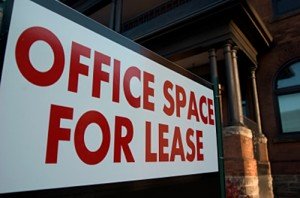Different Types of Leases

When you are looking to rent office space you want to ensure you get the best deal possible. But how do you define “best deal”?
Best deal can mean different things to different companies and can be deceiving based on how space is marketed. Sometimes it seems impossible to compare office spaces when each landlord is choosing to lease their spaces differently, which changes the look of the asking price. Without understanding what each type of lease entails, you could end up settling on a property that might appear to have a low monthly price, but actually ends up exceeding your budget because of expenses that weren’t included in the rent, or more importantly, because it does not help you achieve company goals and objectives. Don’t worry; we are here to help clarify some of the different types of leases marketed.
To simplify, there are full-service leases (aka gross leases) and three types of net leases. With a full-service lease, everything is rolled into one price for the tenant. This includes the base rent as well as all of the three “nets” which include: property taxes and insurance, CAMS (common area maintenance items), and utilities and janitorial services. With net leases, the tenant pays a base rental rate (the one written on the property listing) with one, two or three of the “nets” paid directly, depending on what type of lease it is.
Full-Service Lease or Gross Lease
A full-service lease is generally the type of lease used in multi-floor, multi-tenant office buildings, because all of the tenants use the building’s utilities in more or less the same way. As mentioned above, a full-service lease includes the base rent, as well as all of the three “nets.” In theory, the tenant pays the same rate month to month, with a rent escalation clause whereby the lease rate increases every year, typically by 3%. The full-service rate, however, is usually based on the expenses (i.e. CAMS, taxes, maintenance, etc.) to operate the building in the “base year” the lease was signed. What comes as a surprise to many new tenants is that most full-service leases require the tenant to pay any additional fees that exceed the set “base year” fees. Meaning, each year the Landlord compares the current year’s operating expenses to that of the tenant’s “base year,” and the tenant is responsible for paying any incremental increase in operating cost, say for extra snow removal, or property tax increase. Operating costs are divvied up between tenants based on their pro rata occupancy share of the building’s square footage.
Net Leases
Net leases are generally seen in single story, flex/warehouse, and retail spaces because each tenant uses the utilities very differently. There are three types of net leases: single net, double net, and triple net. The difference between each is the amount of “nets” that are included with the base rent.
- Single Net (Also referred to as Industrial Gross Lease, or Modified Gross Lease)– The base rent will include taxes and insurance, and CAMS, but will exclude utilities and janitorial services, which will be paid directly by tenant. (Note, one of the nets is excluded in the base rent price, hence it is called single-net).
- Double Net The base rent includes taxes and insurance. It excludes CAMS, and utilities and janitorial services, which the tenant pays directly.
- Triple Net – This tends to be the most common net lease. The base rent doesn’t include any of the “nets.” The tenant pays the base rent and separately reimburses the landlord for taxes and CAMS and contracts directly for utilities and janitorial (hence the “triple net” “NNN”).
Which type of lease is more beneficial?
The type of building you are leasing and the way you utilize your space will determine which type of lease is best for you. If you are in a general office building, then a full-service lease could be beneficial. However, if you want to lease in a flex/warehouse space and you use a lot of power for production, or very little power for only warehousing, then a double net or a triple net lease would be the beneficial lease option for you.
And lastly, just make sure when comparing spaces you see which lease option is listed on each space. Be careful not to think a full-service lease space listed for $25 per sq ft, is the same price as a triple net space also listed for $25 per sq ft. The later would be far more expensive (as the expenses would be in addition to base rent.) What you need to focus on is the total cost of occupancy (rent, nets, build-out, infrastructure, data connections, etc.) and how it relates to accomplishing company goals.
As always, work with your broker to ensure the asking price, coupled with any additional expenses, is a fair/competitive price in the going market and will meet your company goals.
Comments